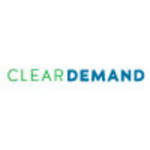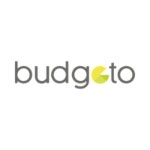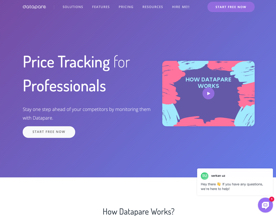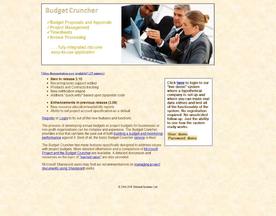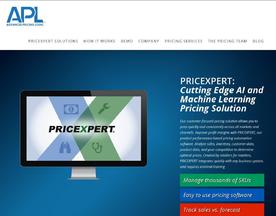What is cost based pricing? Cost based pricing sets prices by adding a markup to the cost of producing goods, ensuring profit.
Cost based pricing is a pricing strategy used by businesses to determine the selling price of a product or service based on the total cost incurred to produce it. This approach involves calculating the total cost of production, including direct costs such as raw materials and labor, as well as indirect costs such as rent and utilities. Once the total cost is determined, a markup is added to arrive at the final price. This markup is typically expressed as a percentage of the total cost.

Understanding Cost Based Pricing
Cost based pricing is a straightforward approach to pricing that allows businesses to ensure that they are covering their costs and making a profit. This method is particularly useful for businesses that operate in industries with high levels of competition and low profit margins. By using cost based pricing, these businesses can avoid pricing their products or services too low, which could result in losses.
Implementation of Cost Based Pricing
To implement cost based pricing, businesses must first calculate their total cost of production. This involves identifying all of the direct and indirect costs associated with producing the product or service. Once the total cost is determined, a markup is added to arrive at the final selling price. The markup should be based on the desired profit margin and should take into account factors such as competition and consumer demand.
Key Takeaways
- Cost based pricing is a pricing strategy that involves calculating the total cost of production and adding a markup to arrive at the selling price.
- This approach is useful for businesses operating in industries with high competition and low profit margins.
- To implement cost based pricing, businesses must first calculate their total cost of production and add a markup based on desired profit margins and market factors.
For more information on cost based pricing, check out this article from Investopedia
Understanding Cost Based Pricing
Definition and Overview
Cost based pricing is a pricing strategy that determines the selling price of a product or service based on its production cost. This pricing strategy is widely used by businesses to ensure that they make a profit on each sale. The cost based pricing approach is based on the idea that the price of a product or service should cover all the costs associated with producing and selling it, including both fixed and variable costs.
Types of Cost Based Pricing
There are two main types of cost based pricing: cost plus pricing and markup pricing. Cost plus pricing involves adding a markup to the production cost of a product or service to determine its selling price. Markup pricing, on the other hand, involves setting a fixed percentage markup on the cost of a product or service.
Calculating Costs
To determine the production cost of a product or service, businesses need to take into account both fixed and variable costs. Fixed costs are those that do not change regardless of the level of production, such as rent, salaries, and insurance. Variable costs, on the other hand, are costs that vary with the level of production, such as raw materials, labor, and utilities.
Once the total production cost is determined, businesses can add a markup or margin to set the selling price. The markup is the amount added to the production cost to determine the selling price, while the margin is the percentage of the selling price that represents the profit margin.
Businesses need to be careful when using cost based pricing as their sole pricing strategy. While it ensures that they cover their costs and make a profit, it may not take into account the market demand and competition. Therefore, it is important to consider other pricing strategies, such as value-based pricing and dynamic pricing, to determine the optimal selling price for a product or service.
For more information on cost based pricing, check out this resource from Investopedia.
Implementation of Cost Based Pricing
Cost based pricing is a popular pricing strategy for businesses that want to ensure they are covering their costs and making a profit. This strategy involves setting prices based on the cost of producing and distributing a product or service. In this section, we will discuss the implementation of cost based pricing, including setting the markup percentage, determining the selling price, and adjusting for market conditions.
Setting the Markup Percentage
Markup pricing is a common method used in cost based pricing. It involves adding a percentage to the cost of producing a product or service to determine the selling price. The markup percentage should be set to cover the costs of production, distribution, and other expenses, as well as to provide a profit margin.
The markup percentage can vary depending on the industry, product, and market rate. A business can research competitor prices and market rates to determine an appropriate markup percentage.
Determining Selling Price
Once the markup percentage is set, the selling price can be determined by adding it to the cost of producing and distributing the product or service. The selling price should be competitive with other businesses in the industry while still covering costs and providing a profit margin.
A business can use a pricing calculator or spreadsheet to determine the selling price based on the markup percentage and cost of production. It is important to regularly review and adjust the selling price based on changes in costs, market conditions, and competitor prices.
Adjusting for Market Conditions
Market conditions can affect the selling price of a product or service. For example, if demand is high, a business may be able to increase the selling price. On the other hand, if there is low demand, a business may need to lower the selling price to remain competitive.
A business should regularly monitor market conditions and adjust the selling price accordingly. This can involve conducting market research, analyzing competitor prices, and tracking sales data.
To learn more about cost based pricing, check out this resource from Investopedia, a trusted source of financial information.
Advantages and Disadvantages
Pros of Cost Based Pricing
Cost based pricing is a pricing strategy where the price of a product or service is determined by the cost of producing it. There are several advantages of using this pricing strategy.
One of the main advantages of cost based pricing is transparency. Since the price of the product is based on the cost of producing it, customers can easily understand how the price is determined. This can lead to increased trust and loyalty from customers.
Another advantage of cost based pricing is simplicity. It is a straightforward pricing strategy that is easy to understand and implement. This can save time and resources that would otherwise be spent on more complex pricing strategies.
Cons of Cost Based Pricing
While there are advantages to using cost based pricing, there are also some drawbacks to consider.
One of the main drawbacks of cost based pricing is that it does not take into account market demand. If the market demand for a product is high, a company may be able to charge a higher price than what the cost based pricing strategy would dictate. On the other hand, if the market demand for a product is low, a company may have to lower the price below the cost of production in order to sell the product.
Another drawback of cost based pricing is that it can lead to manufacturing inefficiencies. If a company is focused solely on minimizing costs, it may cut corners in the manufacturing process that can lead to lower quality products or longer production times.
Overall, cost based pricing can be a useful pricing strategy for companies that want to ensure transparency and simplicity in their pricing. However, it is important to consider the drawbacks and to also take into account market demand and manufacturing efficiencies. For more information on cost based pricing, check out this article from Investopedia.
Comparative Analysis

Cost Based Pricing vs. Value-Based Pricing
Cost based pricing and value-based pricing are two different pricing strategies that businesses use to determine the price of their products or services. Cost based pricing is a method where the price of a product or service is determined by the cost of production, while value-based pricing is a method where the price of a product or service is determined by the perceived value it provides to the customer.
Cost based pricing is more suitable for businesses that sell products or services that are standardized and have a fixed cost of production. On the other hand, value-based pricing is more suitable for businesses that sell products or services that are unique and have a high perceived value to the customer.
A business that uses cost based pricing may have a disadvantage if a competitor has a lower cost of production, as they may be able to offer the product or service at a lower price. However, a business that uses value-based pricing may have an advantage if they are able to provide a unique product or service that has a high perceived value to the customer.
Cost Based Pricing vs. Competition-Based Pricing
Cost based pricing and competition-based pricing are two different pricing strategies that businesses use to determine the price of their products or services. Cost based pricing is a method where the price of a product or service is determined by the cost of production, while competition-based pricing is a method where the price of a product or service is determined by the prices of competitors.
Cost based pricing is more suitable for businesses that sell products or services that have a fixed cost of production. On the other hand, competition-based pricing is more suitable for businesses that sell products or services in a highly competitive market.
A business that uses cost based pricing may have a disadvantage if a competitor is able to offer the product or service at a lower price. However, a business that uses competition-based pricing may have a disadvantage if they are not able to compete with the prices of their competitors.
It is important for businesses to consider both cost based pricing and value-based pricing, as well as competition-based pricing, when determining the price of their products or services. By considering these factors, businesses can ensure that they are offering a fair price to their customers while still remaining competitive in the market.
For more information on cost based pricing and its advantages and disadvantages, click here.
Strategic Considerations

When it comes to cost based pricing, there are several strategic considerations that businesses must take into account to ensure that they are maximizing their profits while meeting market demand. Two key factors to consider are incorporating consumer demand and balancing profit margins and market demand.
Incorporating Consumer Demand
One of the most important considerations when setting prices is consumer demand. Businesses must take into account what their target customers are willing to pay for their products or services. This can be determined through market research, surveys, or by analyzing past sales data.
In addition, businesses must also consider the competition and how their pricing compares. If a business prices their products too high, they may lose customers to competitors who offer similar products at a lower price. On the other hand, if they price their products too low, they may not be able to cover their costs and make a profit.
Balancing Profit Margins and Market Demand
Another key consideration is balancing profit margins and market demand. While it may be tempting to set prices high to maximize profits, businesses must also consider whether there is enough demand for their products or services at that price point. If demand is low, they may need to lower their prices to attract more customers.
At the same time, businesses must also ensure that they are making a sufficient profit margin to cover their costs and invest in future growth. This requires careful analysis of their cost structure and pricing strategy.
By taking these strategic considerations into account, businesses can set prices that are both competitive and profitable, while also meeting the needs and preferences of their target customers.
For more information on cost based pricing strategies, check out this resource from Investopedia.
Cost Breakdown and Analysis

Cost based pricing is a pricing strategy that involves calculating the total cost of producing a product or service and then adding a markup to determine the final price. In order to implement cost based pricing, it is important to have a clear understanding of the cost breakdown and analysis.
Direct and Indirect Costs
Direct costs are those that are directly related to the production of a product or service. These costs include labor, materials, and shipping. Indirect costs, on the other hand, are those that are not directly related to the production of a product or service, but are necessary for the operation of the business. These costs include overhead costs such as rent, utilities, and administrative expenses.
Fixed and Variable Costs
Fixed costs are costs that do not change with the level of production. These costs include rent, salaries, and insurance. Variable costs, on the other hand, are costs that vary with the level of production. These costs include materials, labor, and shipping.
In order to determine the total production costs, it is important to consider both the fixed and variable costs. By understanding the cost breakdown and analysis, businesses can make informed decisions about pricing strategies and ensure that they are covering their costs while still making a profit.
One helpful resource for understanding cost based pricing is the article “Cost-Based Pricing: How to Set Prices Based on Your Business Costs” from the Small Business Administration. This article provides a clear and concise overview of cost based pricing and offers practical tips for implementing this pricing strategy.
Real-world Applications

Cost based pricing is a widely used pricing strategy that is employed by businesses across various industries. This section explores some real-world applications of cost based pricing, including case studies and industry-specific examples.
Case Studies
One example of a company that uses cost based pricing is Everlane, a clothing retailer. Everlane is known for its transparent pricing strategy, which is based on the costs incurred in producing each item. The company provides a breakdown of the costs associated with manufacturing each product, including materials, labor, and transportation. By using cost based pricing, Everlane is able to offer its customers high-quality clothing at affordable prices.
Another example of a company that uses cost based pricing is a manufacturing firm that produces goods such as machinery or electronics. These companies rely on cost based pricing to ensure that they are able to cover their production costs and make a profit. By analyzing the costs associated with manufacturing each product, these companies are able to set prices that are competitive and fair.
Industry-Specific Examples
In the services industry, cost-based pricing is often used to determine the price of services such as consulting or legal advice. For example, a law firm may use cost based pricing to determine the hourly rate for its lawyers. The hourly rate would be based on the costs associated with providing legal services, including salaries, office rent, and other overhead costs.
In the goods industry, cost based pricing is used to determine the price of products such as electronics or appliances. Manufacturers analyze the costs associated with producing each item, including materials, labor, and transportation, and set prices accordingly.
Overall, cost based pricing is a popular pricing strategy that is used by businesses across various industries. By analyzing the costs associated with producing goods or providing services, companies are able to set prices that are fair and competitive. For more information on cost based pricing, check out this resource from Investopedia.
Optimizing Cost Based Pricing
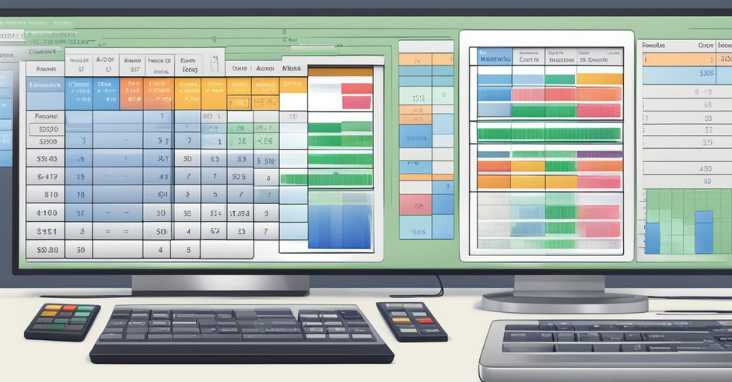
Cost based pricing is a pricing strategy that involves setting prices based on the costs incurred in producing a product or service. This approach ensures that the company covers its costs and makes a profit. However, to optimize cost based pricing, companies must consider several factors that affect profitability.
Efficiency and Cost Reduction
Efficiency and cost reduction are key considerations in optimizing cost based pricing. By improving production processes, companies can reduce costs and increase profitability. This can be achieved through the use of technology, automation, and lean manufacturing techniques. For example, a company can reduce labor costs by automating certain production processes or by outsourcing non-core activities.
Another way to improve efficiency is by reducing waste. This can be achieved through the use of sustainable materials and processes that minimize waste. By reducing waste, companies can lower their costs and improve their environmental impact.
Target Profit and Break-Even Analysis
Target profit and break-even analysis are essential tools for optimizing cost based pricing. Target profit pricing involves setting prices that will achieve a specific profit target. This requires an understanding of the company’s cost structure, market demand, and competition. By setting prices that are aligned with the company’s profit goals, companies can ensure that they are maximizing profitability.
Break-even analysis is another tool that can help companies optimize cost based pricing. This involves calculating the minimum price required to cover all costs and achieve a break-even point. By knowing the break-even point, companies can set prices that ensure profitability and avoid losses.
To optimize cost based pricing, companies must also consider their target market and competition. By understanding customer needs and preferences, companies can set prices that are competitive and attractive. This requires market research and analysis to identify trends and opportunities.
In conclusion, optimizing cost based pricing requires a careful consideration of several factors, including efficiency, cost reduction, target profit, break-even analysis, and market competition. By using these tools and strategies, companies can set prices that maximize profitability and achieve their business goals.
For more information on optimizing cost based pricing, please refer to this resource: Link to Investopedia’s article on Cost-Based Pricing
Conclusion

In conclusion, cost based pricing is a widely used pricing strategy that helps businesses set a price for their products or services based on the cost of production. While it is a relatively easy pricing method to understand and implement, it may not always be the best option for businesses looking to maximize their bottom line or customer satisfaction.
When using cost based pricing, it is important for businesses to consider the expected return on investment and ensure that the price they set covers all costs and provides a satisfactory profit margin. However, it is also important to consider customer satisfaction and ensure that the price is reasonable and fair, as this can impact the long-term success of the business.
Overall, cost based pricing is a useful tool for businesses looking to set a price for their products or services, but it should be used in conjunction with other pricing strategies to ensure the best possible outcome. For more information on cost based pricing and other pricing strategies, check out this resource from Investopedia.
Frequently Asked Questions

How is cost based pricing calculated in service marketing?
In service marketing, cost based pricing is calculated by determining the total cost of producing and delivering a service, and then adding a markup to cover overhead expenses and generate a profit. This markup is typically a percentage of the total cost, and varies depending on the industry, competition, and other factors.
Can you provide examples where cost based pricing is effectively used?
Cost based pricing is often used by businesses in industries such as manufacturing, construction, and transportation, where the cost of producing and delivering a product or service is a significant factor. For example, a construction company may use cost based pricing to determine the price of a building project based on the cost of materials, labor, and equipment.
What differentiates cost based pricing from competition-based pricing?
Cost based pricing is based on the cost of producing and delivering a product or service, while competition-based pricing is based on the prices of similar products or services offered by competitors. Cost based pricing is more common in industries where there is less competition and where the cost of production is a significant factor in determining the price.
What are the primary advantages of adopting a cost based pricing strategy?
One of the primary advantages of adopting a cost based pricing strategy is that it ensures that the business is able to cover its costs and generate a profit. It also provides a clear and transparent pricing structure that customers can understand and compare to other options. Additionally, cost based pricing can help businesses avoid pricing wars with competitors, as they are not solely focused on undercutting each other’s prices.
In what scenarios is cost based pricing less advantageous compared to other pricing strategies?
Cost based pricing may be less advantageous in industries where there is intense competition and where customers are highly price-sensitive. In these scenarios, businesses may need to adopt a pricing strategy that focuses more on value and differentiation, such as value-based pricing or premium pricing.
How does cost based pricing differ from value-based pricing in terms of approach?
Cost-based pricing focuses on the cost of producing and delivering a product or service, while value-based pricing focuses on the perceived value of the product or service to the customer. Value-based pricing takes into account factors such as quality, features, and benefits, and may result in a higher price than cost based pricing. A business may choose to adopt a value-based pricing strategy if it believes that its product or service offers unique value to customers.
For more information on cost-based pricing, visit Investopedia.




